The Neapolitan mastiff, or the “mastiff,” is the gladiator of dogs. These dogs were literally bred for war in the Roman Empire as far back as 700 B.C. Today, they make extremely effective guard dogs. No one would think of challenging their giant, lumbering frames, even if their teeth are hidden behind layers of loose wrinkles.
More often, though, the mastiff is a laid back companion who can be found sleeping at any given moment. Read on to learn more about the Neapolitan mastiff.
Description of the Neapolitan Mastiff
These dogs are impressive. Few people meet one on the street without stopping to exclaim about their size and jowls. They are absolutely huge, not only in height but in bulk as well. Their heads look like they’ve grown too big for their eyes, which often barely peak out behind all that skin. The Neapolitan mastiff really is a giant breed.
The mastiff is most famous for his wrinkles. His whole body is covered in them, like he was prepared to grow much bigger than he did – which seems like quite the feat already! The breed was made famous by Fang, Hagrid’s dog in Harry Potter movies. The “actor” dogs were Neapolitan mastiffs, despite the original Fang being a boarhound in the books.
Covering all that skin is a short coat, which can be various shades, including fawn, mahogany, brindle, tawny, blue, and grey, among others. Tawny and mahogany are the most common colorations for the Neapolitan mastiffs.
Life Expectancy and Size
This breed shows a large division between male and female size. The female is normally between 24 and 29 inches tall, and a cool 110 pounds. The male however, stands between 26 and 31 inches, and can reach up to 150 pounds!
Maintaining such a creature is not easy. The Neapolitan mastiff eats large amounts of food, can easily damage his joints, and often doesn’t know his own strength. Unfortunately, because of their giant size, the mastiff does not live as long as many other breeds. The life expectancy of this gentle giant is between 7 and 9 years.
Protective Ability
This breed is the epitome of a guard dog, having been bred to protect.
Neapolitan mastiffs are most effective because they are scary-looking, though they are not generally overly aggressive dogs. In fact, they are downright calm. They are certainly not athletic in the way of the German shepherd, which could chase an intruder down in a couple of strides.
However, the mastiff turns protective when need be. This can be an issue when other dogs or people provoke him. He does not seek out the fight, but can certainly win one without lifting a paw. It is essential to socialize this breed early and often. They should recognize the difference between normal and threatening behaviors, lest they become unmanageable as adults.
Training
Training should begin young, with a firm, but positive owner. The Neapolitan mastiff can be a rambunctious youngster. Proper training will ensure that they calm down as they age. This is extremely important, because a rowdy 40-pound puppy is much easier to handle than an unresponsive 150-pound adult.
This breed responds best to positive, reward-based training. Although they can be stubborn, they need constant reinforcement when they are behaving properly. Harsh words will cause these dogs to clam up or become moody and sad.
Stubborn youngsters should be handled with care. A confident, collected owner should have no trouble getting good results from the mastiff. A good puppy kindergarten can offer support and plenty of opportunities for socialization.
Energy Level
This dog’s energy level dramatically tapers off after puppyhood. The rowdy pup turned sleepy adult is the normal progression for this breed. They simply cannot maintain that kind of energy expenditure. In fact, they overheat quite quickly! It can be a challenge to maintain the proper amount of exercise to reduce stress on their bodies while still keeping them fit.
What Living with a Neapolitan Mastiff is Like
Owning a Neapolitan mastiff is a unique experience. However, life with a giant dog is not as intimidating as it may appear. The mastiff needs plenty of room in his living space. Otherwise, it’s easy to bump in to things. A home without too many stairs would be ideal. This helps protect the dog’s sensitive joints.
One of the hardest parts of owning this dog is figuring out their complex exercise needs. It is important to create balance. They must not become overweight, or romp around so much that they hurt themselves. It’s a fine line.
Although Neapolitan mastiffs are popular guard dogs, they are generally also chill companions. As they age, they get sleepier and calmer. With proper socialization, aggression should not be an issue. They are usually quite gentle with children, but sometimes they do not realize their own strength – or size! For this reason, they should be monitored with kids.
If anything, this mastiff’s drooling, snoring, and flatulence might be the most problematic aspect of living with him.
Care of the Neapolitan Mastiff
These dogs need careful handling to maintain their health and wellbeing. However, families willing to put in the effort will be rewarded with a loving, lumbering companion and protector.
Environmental Needs
The mastiff does not need as much outdoor space as many more athletic dogs. However, they require adequate living space for their giant selves.
The breed also overheats quite easily. They may not be suited to extremely hot climates. On steamy days, it is important to provide them with adequate cool water and shade. They should not be over stimulated, either.
Exercise Needs
The best type of exercise for the Neapolitan mastiff is a gentle walk. They should not be allowed to run too much for fear of hurting their joints. When they are romping around outside, be sure to provide plenty of water.
Puppies in particular are susceptible to exercise-related injury. Because they are more energetic when young, they may hurt themselves without realizing it. Limit young mastiffs’ access to stairs, which can be very hard on the knees.
Games like tug of war and wrestling are also not advised. Although fun for your puppy, these games are simply not sustainable later. It is important to keep these dogs respectful and calm so that they do not become unmanageable. Mindful play, along with rewards-based training from a young age, are the ticket to success.
Shedding and Grooming
This breed only sheds minimally. In fact, they are quite easy to maintain.
The Neapolitan mastiff requires only the occasional bath, though his face can get messy. With all that extra skin, it can be difficult to maintain composure. These dogs’ mouths, noses, and chests often get covered in whatever they’re eating! Cleaning them up with a damp towel is usually effective.
Be sure to check the mastiff’s wrinkles and ensure they’re dry. Skin infections can easily take hold in deep skin folds.
Ideal Home Environment
This breed is popular as a guard dog, however, they thrive with families and loving owners. They enjoy company, and often won’t leave their favorite people alone. Because they’re quite lazy, that often means napping in the same room.
The mastiff is perfect for families that can provide the necessary attention to detail that giant dogs require. They need ample living space and a comfortable place to exercise.
Providing early socialization and training will make living with the mastiff much more enjoyable. Still, these are big, slobbery beings. They won’t be traveling in a purse anytime soon!
Health Concerns
Unfortunately, the mastiff can be difficult to keep healthy, even for their short lifespan. They are prone to joint problems, so their exercise must be carefully monitored. Those joints have to hold a lot of weight!
A common problem for mastiffs is eye irritation. This often isn’t serious, but redness or tearing should be checked out by a vet. Stomach problems, including bloat, affect this breed as well as other large dogs. Cancer is not uncommon toward the end of their lives.
Behavior Problems
The mastiff is generally well behaved. If anything, he can be a bit lazy.
Of course, there are a few problems that come along with being so big. These giants may not realize their own size or power, consequentially pushing people or other dogs around. Although they don’t usually pick fights, they can win most fights they enter. This can result in accidents, including potential injury to others. The best way to avoid problems with the Neapolitan mastiff is to start obedience and socialization early.
Certain landlords or insurance companies may discriminate against the breed. This could result in potential legal problems, or at least complications. Owning them is not without responsibility.



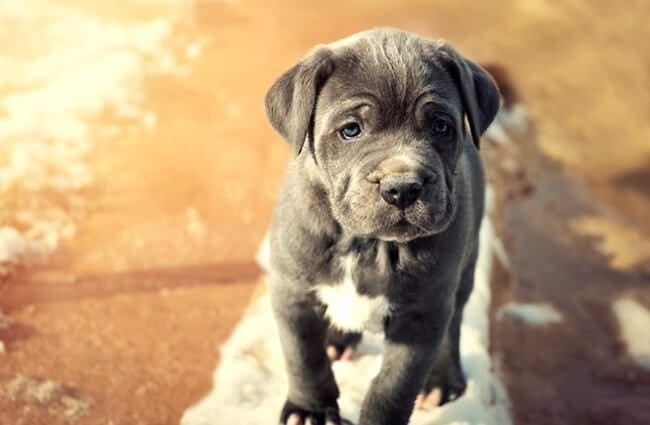



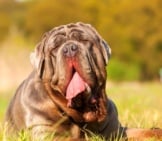


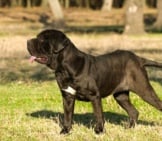






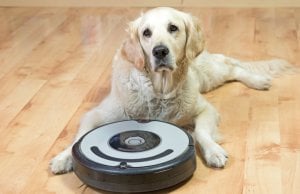

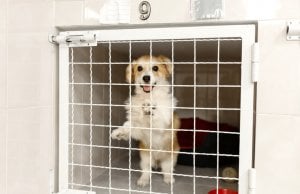




![Red Angus Closeup of a beautiful Red Angus cowPhoto by: U.S. Department of Agriculture [pubic domain]https://creativecommons.org/licenses/by/2.0/](https://animals.net/wp-content/uploads/2020/03/Red-Angus-4-100x75.jpg)

